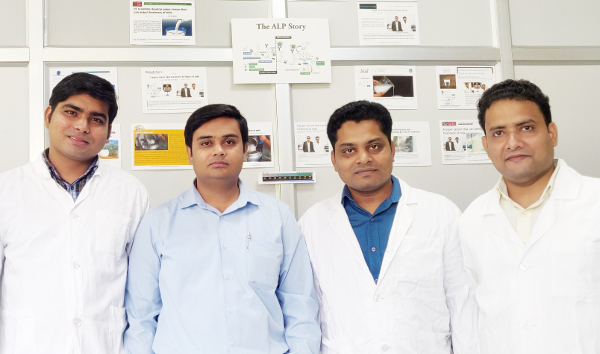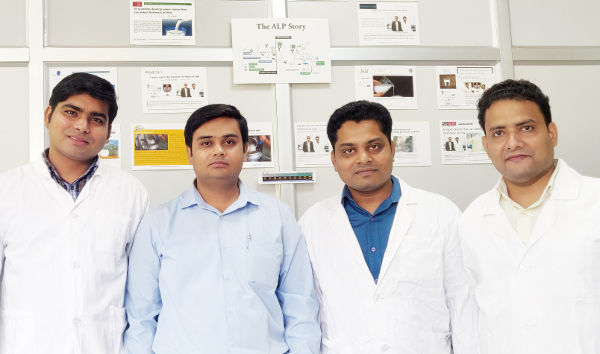Various metabolic processes that take place in our body cause production of hydrogen peroxide, a toxic chemical. Over-production of this molecule is a sign of various diseases. Now scientists from IIT Guwahati have fabricated a nano-chip from laboratory waste that can sense hydrogen peroxide, and thus may find use in diagnosing progression of related diseases.
Hydrogen peroxide is generally used as a mild disinfectant for cuts, scraps and burns, but within the human body is a byproduct of metabolic processes. Due to its toxic nature, it can cause damage to proteins. To prevent this damage, body has enzymes like catalase and peroxidase which convert it into non-harmful entities. However, imbalance in metabolic processes in diseases such as neurodegenerative disorders, cancer, inflammation, diabetes, cardiovascular diseases cause over-production of hydrogen peroxide in the body.
Detection of hydrogen peroxide in various body tissues, blood, urine etc. is used for diagnosing such diseases. Although enzyme-peroxidase based methods exist to detect hydrogen peroxide but they are cumbersome and costly due to use of sophisticated instruments, need for trained personnel, derivatization, and multistep protocols, apart from short shelf life of enzymes.
The nano-chip fabricated by team of scientists from the Indian Institute of Technology-Guwahati is enzyme-free and can be used for hydrogen peroxide detection. Researchers used peroxidase activity of gold to detect hydrogen peroxide, and plated gold on indium tin oxide plate which is used for performing scanning electron microscopy in laboratories but discarded after one use.
“ The sensor development process is time saving requiring just 30 minutes for the sensor chip fabrication from raw materials, which can be reused for several times without losing the efficiency ”
Thereafter, sputtering – a process in which fast ions of metal are bombarded on metal surface to make undulations – was performed on gold plated chip which creates more surface area for hydrogen peroxide detection. The chip was tested electron microscopy and its efficacy was assessed in detecting hydrogen peroxide in human blood samples.
“The sensor development process is time saving requiring just 30 minutes for the sensor chip fabrication from raw materials, which can be reused for several times without losing the efficiency,” explained Dr. Pranjal Chandra, leader of the research team, while talking to India Science Wire.
The nano-chip can detect extremely low levels of hydrogen peroxide and takes less than a second for detection. The presence of other substances in blood such as glucose, citric acid, ascorbic acid, uric acid etc. do not hinder detection of hydrogen peroxide. The chip stays stable for use for up to 12 weeks.
“Future work can be directed towards development of a hand heled device integrated with an interface like mobile phone based on the sensing principle and prototype demonstrated in our work. The system can also be tested for hydrogen-peroxide detection in various other clinically important samples such as serum, urine, tear, and in related industries”, added Dr. Chandra.

The research team included Buddhadev Purohit, Kuldeep Mahato and Ashutosh Kumar. The research findings have published in journal Microchimica Acta. The research was supported by grants from the Department of Science and Technology.
India Science Wire
Source: Vigyan Prasar
Image Courtesy: Vigyan Prasar
You may also like
-
New Heat-Based Approach To Cancer Treatment Can Reduce Chemotherapy Doses
-
Scientists Take A Major Step Towards Unification Of Classical & Quantum Gravity
-
India Graphene Engineering and Innovation Centre (IGEIC) Under the Vision of Viksit Bharat@2047 Launched
-
New High-Performance Gas Sensor can Monitor Low Level Nitrogen Oxides Pollution
-
Antidepressant Drug can be Repurposed for Treating Breast Cancer
